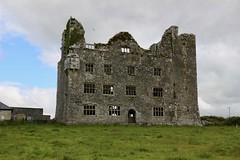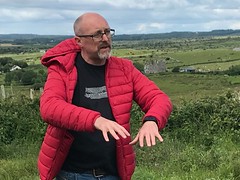Exploring new ways of combining art, archaeology and heritage
The project involves archaeologists and artists with the aim to establish a transdisciplinary and translocal practice of Experimental Heritage in a Swedish-Irish context. The project is situated simultaneously in western Ireland and south-eastern Sweden – landscapes both similar and different. The project explores new ways of combining art, archaeology and heritage within these landscapes. It encourages approaches and perspectives concerning how the past matters to us in the present and might have an impact on the future.
We leave the arenas of conventional art and archaeology/heritage research, communication and presentations. The constraints of convention are consciously substituted by alternative settings in the landscape. The project work includes collaborations with people from local communities in each country contributing to the explorations with their perspectives, experiences and stories.
“… I try to avoid present-time judgement of other times. There are generally such strong views in the present about how we ought to live and be, and I think that such strong opinions should be avoided when it comes to the study of past times. Otherwise it is most probable that we block our possibility to understand and engage in other peoples as well as other times.” Bodil Petersson
Exploring multitemporal layers in landscapes
The aim of the project is to explore the landscapes, their similarities and differences, with the aid of combined artistic and archaeological practices. Starting points for exploration are: stone and water, movement and time, and material and immaterial aspects of landscape experience.
Art, archaeology and heritage are explored through the senses. A phenomenological landscape perspective is combined with movement-based practice. These methods are paired with other artistic and archaeological expressions such as poetry, music, performance, visual arts, physical surveys, mapping and excavations.
The possibility with Experimental Heritage as practice in the landscape is its ability to challenge our current worldview to better understand other times and cultures as well as our own. This will, in turn, provide us with new tools to create alternative futures resting on care and respect for the need for diversity. We aim to find out more about the multitemporal layers in the landscapes surrounding us and how they relate to our inner landscapes of multitemporal perception. The combination and equal roles of artists and archaeologists in this striving are crucial.


















